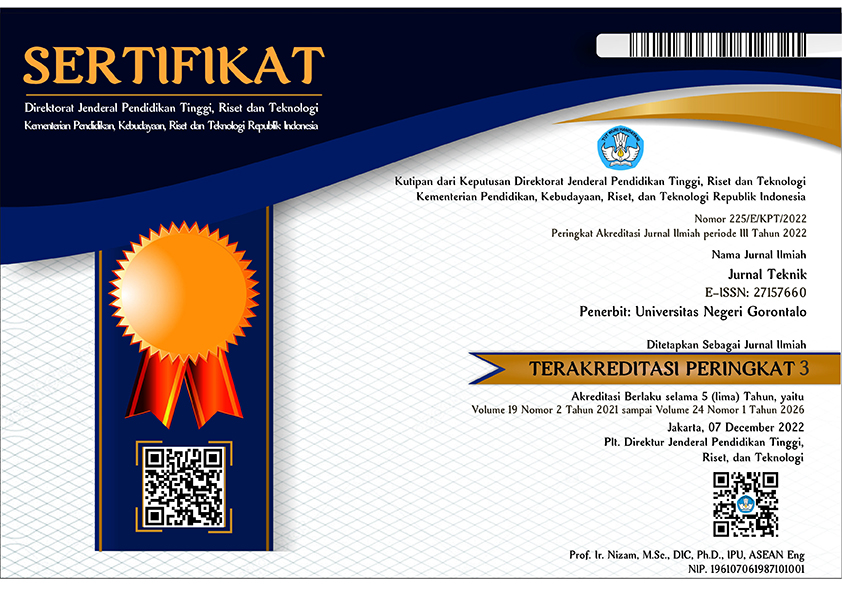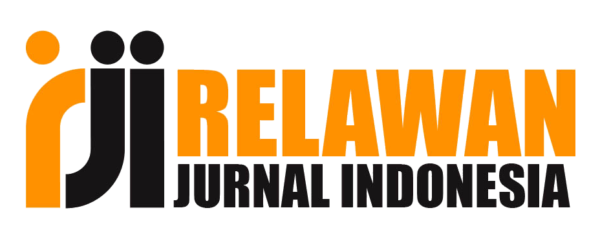A Novel Hybrid Model for Disaster Relief: Combining Operational Cost Minimization and Priority-Based Resource Allocation
Abstract
Humanitarian logistics plays a crucial role in disaster management, yet it faces persistent challenges in ensuring equitable and efficient aid distribution. These challenges include high operational costs, inequitable resource allocation, and limited adaptability to dynamic disaster conditions. Existing models, either cost-based or priority-based, fail to balance these competing demands effectively. This research addresses this gap by developing a hybrid multi-objective optimization model that integrates cost minimization and priority-based resource allocation. The primary objective of this study is to optimize aid distribution in disaster-affected regions, ensuring both efficiency and fairness. The model employs a quantitative research approach, leveraging mathematical programming to simulate disaster scenarios. Key variables include operational costs, delivery times, demand levels, and priority rankings, collected from hypothetical disaster data. The results reveal that the hybrid model significantly outperforms conventional approaches. It achieves up to a 15% reduction in operational costs and a 25% improvement in aid coverage for high-priority regions. Furthermore, it balances resource allocation effectively across regions with varying levels of need. The discussion emphasizes the model's adaptability and scalability, offering practical solutions for disaster relief operations. In conclusion, the hybrid model presents a robust framework for humanitarian logistics, addressing inefficiencies and inequities in aid distribution. This research impacts policy-making and operational planning, paving the way for more effective disaster management strategies.
Downloads
References
Aghsami, A., Sharififar, S., Moghaddam, N. M., Hazrati, E., & Jolai, F. (2024). A bi-objective mixed-integer non-linear programming model with Grasshopper Optimization Algorithm for military-based humanitarian supply chains. Decision Analytics Journal, 10. https://doi.org/10.1016/j.dajour.2024.100409
Ahmad, M. S., Fei, W., Shoaib, M., & Ali, H. (2024). Identification of Key Drivers for Performance Measurement in Sustainable Humanitarian Relief Logistics: An Integrated Fuzzy Delphi-DEMATEL Approach. Sustainability (Switzerland) , 16(11). https://doi.org/10.3390/su16114412
Edwards, D., Subramanian, N., Chaudhuri, A., Morlacchi, P., & Zeng, W. (2024). Use of delivery drones for humanitarian operations: analysis of adoption barriers among logistics service providers from the technology acceptance model perspective. Annals of Operations Research, 335(3), 1645–1667. https://doi.org/10.1007/s10479-023-05307-4
Elleuch, H., Dafaoui, E., El Mhamedi, A., & Chabchoub, H. (2016). A Quality Function Deployment approach for Production Resilience improvement in Supply Chain: Case of Agrifood Industry. IFAC-PapersOnLine, 49(31), 125–130. https://doi.org/10.1016/j.ifacol.2016.12.173
Ferreira, J. C., Steiner, M. T. A., & Canciglieri Junior, O. (2020). Multi-objective optimization for the green vehicle routing problem: A systematic literature review and future directions. Cogent Engineering, 7(1). https://doi.org/10.1080/23311916.2020.1807082
Frennesson, L., Kembro, J., de Vries, H., Van Wassenhove, L., & Jahre, M. (2021). Localisation of logistics preparedness in international humanitarian organisations. Journal of Humanitarian Logistics and Supply Chain Management, 11(1), 81–106. https://doi.org/10.1108/JHLSCM-06-2020-0048
Fuqua, D., & Hespeler, S. (2022). Commodity demand forecasting using modulated rank reduction for humanitarian logistics planning[Formula presented]. Expert Systems with Applications, 206. https://doi.org/10.1016/j.eswa.2022.117753
Ghelichi, Z., Gentili, M., & Mirchandani, P. (2024). A simulation-based performance evaluation model for decision support on drone location and delivery scheduling. Journal of Humanitarian Logistics and Supply Chain Management, 14(3), 304–327. https://doi.org/10.1108/JHLSCM-04-2023-0036
Giedelmann-L, N., Guerrero, W. J., & Solano-Charris, E. L. (2022). System dynamics approach for food inventory policy assessment in a humanitarian supply chain. International Journal of Disaster Risk Reduction, 81. https://doi.org/10.1016/j.ijdrr.2022.103286
Guo, X., & Kapucu, N. (2020). Engaging Stakeholders for Collaborative Decision Making in Humanitarian Logistics Using System Dynamics. Journal of Homeland Security and Emergency Management, 17(1). https://doi.org/10.1515/jhsem-2018-0061
Hamidi, S. M. M., Hoseini, S. F., Gholami, H., & Kananizadeh-Bahmani, M. (2024). A three-stage digital maturity model to assess readiness for blockchain implementation in the maritime logistics industry. Journal of Industrial Information Integration, 41. https://doi.org/10.1016/j.jii.2024.100643
Hernández-Leandro, N. A., Ibarra-Rojas, O., & Camacho-Vallejo, J.-F. (2022). A bi-objective humanitarian logistics model considering equity in the affected zones: Application to a recent earthquake in Mexico. RAIRO - Operations Research, 56(3), 1737–1762. https://doi.org/10.1051/ro/2022067
Kamat, A., Shanker, S., Barve, A., Muduli, K., Mangla, S. K., & Luthra, S. (2022). Uncovering interrelationships between barriers to unmanned aerial vehicles in humanitarian logistics. Operations Management Research, 15(3–4), 1134–1160. https://doi.org/10.1007/s12063-021-00235-7
Khan, M., Imtiaz, S., Parvaiz, G. S., Hussain, A., & Bae, J. (2021). Integration of Internet-of-Things with Blockchain Technology to Enhance Humanitarian Logistics Performance. IEEE Access, 9, 25422–25436. https://doi.org/10.1109/ACCESS.2021.3054771
Maghsoudi, A., & Moshtari, M. (2021). Challenges in disaster relief operations: evidence from the 2017 Kermanshah earthquake. Journal of Humanitarian Logistics and Supply Chain Management, 11(1), 107–134. https://doi.org/10.1108/JHLSCM-08-2019-0054
Mangla, S. K., & Luthra, S. (2022). When challenges need an evaluation: for operational excellence and sustainability orientation in humanitarian supply and logistics management. Production Planning and Control, 33(6–7), 539–557. https://doi.org/10.1080/09537287.2020.1834129
Monzón, J., Liberatore, F., & Vitoriano, B. (2020). A mathematical pre-disaster model with uncertainty and multiple criteria for facility location and network fortification. Mathematics, 8(4). https://doi.org/10.3390/math8040529
Nayeem, M. K., & Lee, G. M. (2021). Robust design of relief distribution networks considering uncertainty. Sustainability (Switzerland), 13(16). https://doi.org/10.3390/su13169281
Noyan, N., Rudolf, G., & Lejeune, M. (2022). Distributionally Robust Optimization under a Decision-Dependent Ambiguity Set with Applications to Machine Scheduling and Humanitarian Logistics. INFORMS Journal on Computing, 34(2), 729–751. https://doi.org/10.1287/ijoc.2021.1096
Paz-Orozco, H., de Brito Junior, I., Chong, M., Anacona-Mopan, Y., Segura Dorado, J. A., & Moyano, M. (2023). Earthquake Decision-Making Tool for Humanitarian Logistics Network: An Application in Popayan, Colombia. Logistics, 7(4). https://doi.org/10.3390/logistics7040068
Saïah, F., Vega, D., & Kovács, G. (2023). Toward a common humanitarian supply chain process model: the Frontline Humanitarian Logistics Initiative. International Journal of Operations and Production Management, 43(13), 238–269. https://doi.org/10.1108/IJOPM-01-2023-0054
Shrivastav, S. K., & Bag, S. (2024). Humanitarian supply chain management in the digital age: a hybrid review using published literature and social media data. Benchmarking, 31(7), 2267–2301. https://doi.org/10.1108/BIJ-04-2023-0273
Warnier, M., Alkema, V., Comes, T., & Van de Walle, B. (2020). Humanitarian access, interrupted: dynamic near real-time network analytics and mapping for reaching communities in disaster-affected countries. OR Spectrum, 42(3), 815–834. https://doi.org/10.1007/s00291-020-00582-0
Copyright (c) 2024 MIFTAHOL ARIFIN, Yulinda Uswatun Kasanah, Nabila Noor Qisthani, Syarif Hidaytuloh (Author)

This work is licensed under a Creative Commons Attribution-ShareAlike 4.0 International License.













